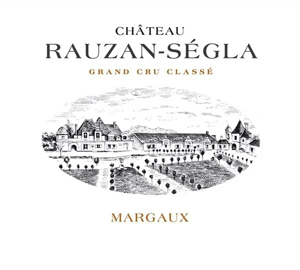| Region | |
|---|---|
| Subregion | France > Bordeaux > Left Bank > Margaux |
| Colour | Red |
| Type | Still |


The 2000 Rauzan-Ségla is deep in color. The bouquet is similar to the bottle poured a couple of years ago, featuring blueberry and Provençal herbs, the secondary and primary scents commingling to wonderful effect. The palate is medium-bodied with grainy tannins and tarry black fruit, and quite structured and fresh, leading to a grippy, saline finish. A redoubtable, almost swarthy Margaux that should drink well for another 20 years or more. Superb.
Tawny rose in colour, with dried roses, mushroom and soy on the aromatics, this is definitely open and heading to fully tertiary, focusing squarely on charcoal, spice and undergrowth rather than plump fruits at this stage, with a touch of earthy brett. You can find more muscular 2000s, but this is succulent, welcoming and very much ready to drink, with layers of smoky oak. 60% new oak barrels, 37hl/h yield. Harvest September 25 to October 6. John Kolasa director.
The 2000 Rauzan-Ségla was the only vintage that I procured myself out in the market because of many fond memories. I am so glad I did fill in the gap because I feel it is a rather overlooked gem. It has a gorgeous bouquet, a little backward at first but then opening with black cherries, blueberry jam and hints of Provençal herbs, though none of the saddle leather I noticed back in 2010. The palate is medium-bodied with smooth tannins, nigh perfect acidity and a rich, quite grippy finish. The estate prefers the 2001 but I find this possesses more ambition. Tasted at Lorne restaurant in London. Drink 2019-2040.
While the bottled 2000 still reveals a certain sternness in addition to tough tannin, it is sweeter and more expansive and flavorful. The dark ruby/purple color is saturated and impressive. With coaxing, notes of lead pencil shavings, black currants, earth, cedar, and spice box emerge from a relatively closed, firm, medium to full-bodied wine or, as the French would say, a classic vin de garde (for long-term cellaring). Although austere, it is a classic, authoritatively flavored effort that requires patience. I would like to see sweeter tannin and more flesh built into the mid-palate, but there is no denying the classicism and purity of this 2000. Anticipated maturity: 2010-2025.
This wine is evolving nicely and will probably merit an outstanding score by the time it is bottled. The tannin has sweetened since last year (a positive sign), although this Margaux has not yet put on the weight expected given how its peers have developed. An impressive opaque purple color is followed by an elegant, fragrant bouquet of black fruits, minerals, dried Provencal herbs, and vanilla. Medium-bodied, with high but sweet tannin, a nice texture, and a moderately long finish, this classically refined as well as authoritatively flavored effort will be at its finest between 2006-2020.
This wine has closed down since I tasted it in January. It reveals notes of green pepper in the otherwise enticing bouquet of black fruits, minerals, and vanillin, medium to full body, an austere, structured personality, and copious tannin. While I initially thought it would taste better, there is a lot going on in this 2000, so perhaps my score is unduly conservative. There is no question that this wine has considerable upside potential. Anticipated maturity: 2008-2020.
This seems quite fleshy on the nose, just a touch of reduction at first although it blows away. Cranberry, strawberry, a touch of fig, then more secondary aromas coming through: saddle leather and Provencal herbs. The palate is medium-bodied, quite opulent and generous, silky smooth tannins but there is also real backbone to this wine. As always, this wine is masculine and broody at birth but now is coming into its own and lightening up. Red-berried fruits, a touch of pepper, orange zest, tightly coiled and pointed towards the finish. Great weight and grip on the finish. Superb. Drink 2013-2040.